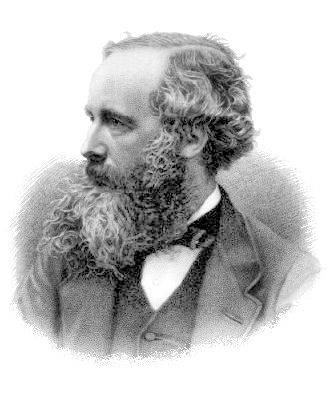James Clerk Maxwell Biography and Facts
James Clerk Maxwell (1831 - 1879) was a famous mathematical physicist. He developed a set of equations that describe electricity, magnetism, and optics as manifestations of the one and same phenomenon - electromagnetic field. His theories were basis for such fields as special relativity and quantum mechanics.
James Clerk Maxwell was born on 13 June 1831 in Edinburgh, Scotland. His father was John Clerk, an advocate, and his mother Frances Cay. From an early age he manifested great curiosity so his mother took responsibility for his early education. Unfortunately she died when Maxwell was only 8 years old. His father and his sister-in-law Jane then took his education onto themselves. After few unsuccessful tutors James was sent to the prestigious Edinburgh Academy when he was 10. There he met Lewis Campbell and Peter Guthrie Tait, his later lifelong friends and also notable scholars. At that time Maxwell was fascinated by geometry and he won the school's mathematical medal and first prize for both English and poetry but his talents went mostly unnoticed. He also had other interests. He finished his first scientific paper at the age of 14. At the age of 16 he began attending classes at the University of Edinburgh. He experimented there with chemical, electric, magnetic apparatuses, and properties of polarized light. In October 1850, as a 19-year-old and an accomplished mathematician, Maxwell left Scotland for the University of Cambridge. He graduated there in 1854, with a degree in mathematics. He remained there after graduating and applied for a fellowship which allowed him to pursue his own scientific interests like nature and perception of colors. In 1856 he leaves Cambridge for professorship at Aberdeen. There he solved the nature of Saturn's rings and married Katherine Mary Dewar with whom he had married life "of unexampled devotion". When he was laid off from the University of Aberdeen and after recovering from a near-fatal bout of smallpox he goes to London to be professor at King's College. He examined there a nature of electric and magnetic fields and made a conceptual model for electromagnetic induction. He left King’s College in 1865 and left for Glenlair with Katherine. There he wrote papers on various designs of lattice and a textbook Theory of Heat. He became the first Cavendish Professor of Physics at Cambridge in 1871 and was put in charge of the development of the Cavendish Laboratory. He died in Cambridge of abdominal cancer on 5 November 1879 at the age of 48.
Maxwell had studied electricity and magnetism and showed that two phenomena were related. He calculated that the speed of propagation of an electromagnetic field is that of the speed of light, didn’t believe that this is just a coincidence and that this three phenomena are linked and the same. This connection between light and electromagnetism is considered one of the great accomplishments of 19th century mathematical physics. He expressed electromagnetism in the algebra of quaternions (a number system that extends the complex numbers). Maxwell introduced the concept of the electromagnetic field. Oliver Heaviside simplified Maxwell’s theory down to four differential equations, known now as Maxwell's Laws or Maxwell's equations. This system requires an absolute frame of reference in which the equations were valid, and equations changed form for a moving observer. This problem inspired Albert Einstein to formulate the theory of special relativity. Maxwell also contributed to the field of optics and the study of color vision, which created the foundation for color photography.
